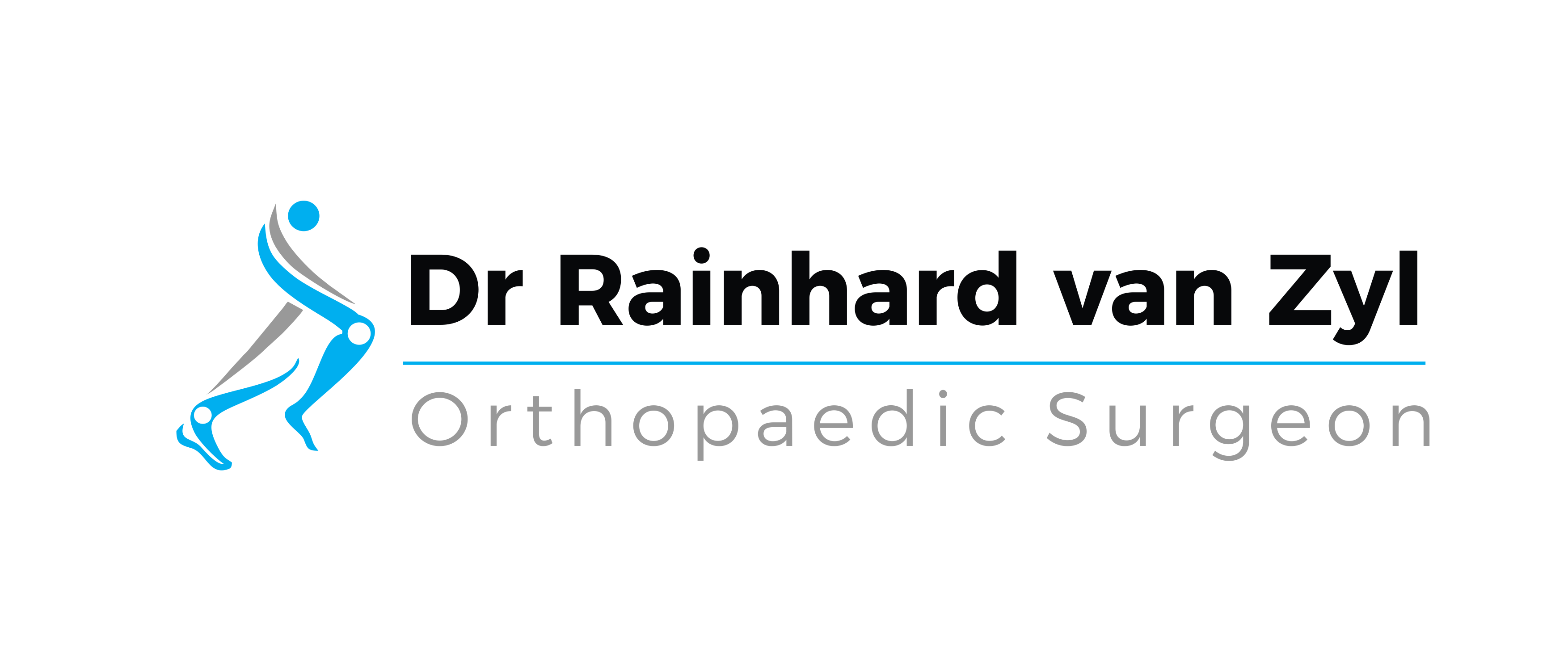A CAPE TOWN-BASED ORTHOPAEDIC SURGEON
Dr. Rainhard van Zyl is an AOA fellowship trained and recognised surgeon specialising in orthopaedic trauma and adult hip and knee surgery.
Trauma
Paediatric and Childrens Fractures
Fractures/Broken bones in children are very common and Dr van Zyl has extensive experience treating these and the problems that they can present. As children are still growing and have different anatomy, they are not ‘mini adults’ and they need special consideration and treatment.
Upper limb fractures ( Shoulder,elbow, hand and wrist)
Fractures (Broken Bones) of the shoulder, elbow, hand and wrist are common from both minor and major accidents. These are incapacitating in the short term as they commonly require the use of a cast or brace and restrict the use of the affected limb.
Lower limb fractures (Hip, knee, foot and ankle)
Fractures (Broken Bones) of the thigh, knee, foot and ankle, are common from both minor and major accidents. These are incapacitating in the short term as they commonly require the use of crutches, casts and modifications of activities as well as time off work and driving restrictions.
Ligament and sport injuries
A ligament is a tough band of fibrous tissue that connects bone to bone or bone to cartilage. While ligaments are extremely strong, they can be stretched or even torn, resulting in different grades of sprains. A ligament tear usually occurs due to extreme force to a joint such as with a fall or another high-impact event. Common ligament tears are to the ankle, knee, wrist, thumb, neck, or back ligaments.
Hip Fractures
A hip fracture is a break in the upper quarter of the femur (thigh) bone. The extent of the break depends on the forces that are involved.
Plaster Care
General Instructions
- Keep the plaster cast clean and dry at all times.
- When showering use a plastic bag and rubber band or tape to secure the cast and keep it dry.
- The cast usually dries completely in 48 hours. Allow it to dry naturally and keep it away from direct heat.
- Check your skin each day for any areas the seem irritated or uncomfortable.
- Avoid bumping or hitting the cast.
- Do not try to modify, remove or trim the cast without speaking to Dr van Zyl.
- Keep the limb in plaster raised above the level of the heart as much as possible.
- Keep children out of sandpits, and avoid vigorous activity
Open fractures including various internal and external fixation tecnhniques, implants and devices
An open fracture, also called a compound fracture, is a fracture in which there is an open wound or break in the skin near the site of the broken bone. Most often, this wound is caused by a fragment of bone breaking through the skin at the moment of the injury.
An open fracture requires different treatment than a closed fracture, in which there is no open wound. This is because, once the skin is broken, bacteria from dirt and other contaminants can enter the wound and cause infection. For this reason, early treatment for an open fracture focuses on preventing infection at the site of the injury. The wound, tissues, and bone must be cleaned out in a surgical procedure as soon as possible. The fractured bone must also be stabilized to allow the wound to heal.
FOR ALL AFTER HOURS REFERRALS FRACTURES/BROKEN BONES
CALL
Louis Leipoldt Hospital
Emergency Department 021 957 6000 / 086 155 5511
